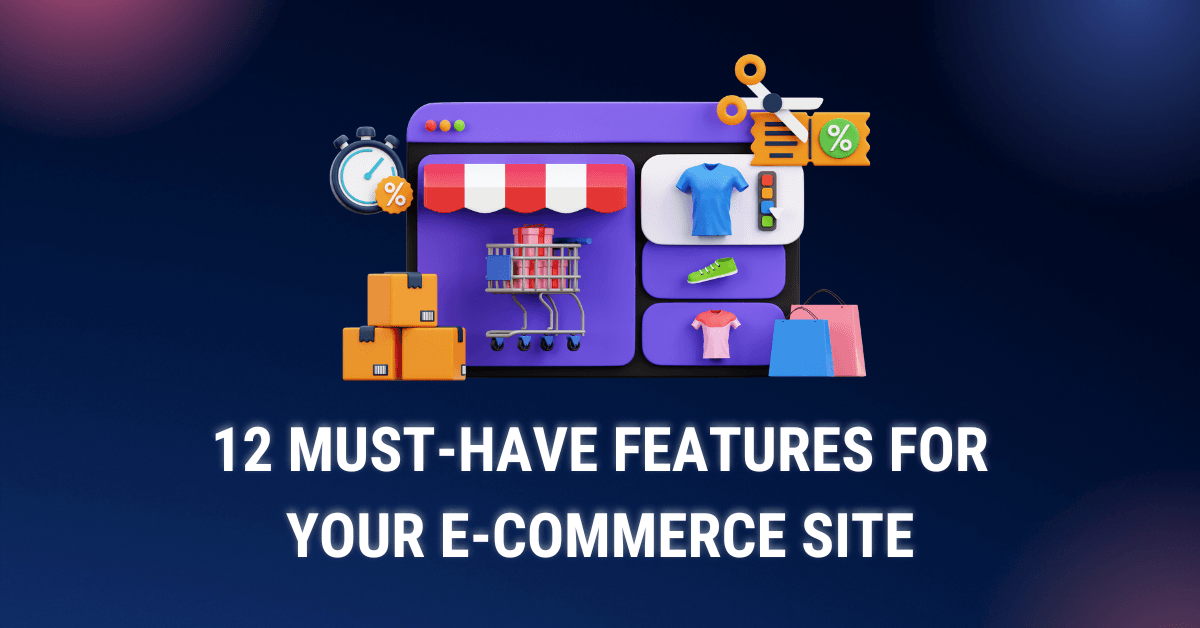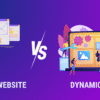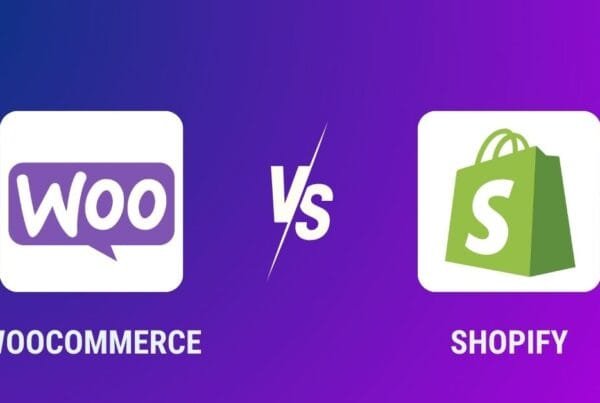In the ever-evolving world of online retail, staying ahead of the curve is crucial for success. As we navigate through the e-commerce landscape continues to shift, driven by technological advancements and changing consumer behaviors. Whether you’re a seasoned online retailer or just starting your e-commerce journey, understanding and implementing the essential features for your website can make the difference between thriving and merely surviving in this competitive space. In this article, we have covered 12 Important E-Commerce Site features.
This comprehensive guide will delve into the must-have features for e-commerce websites, explaining why each is crucial and how to implement them effectively.
1. Responsive Design: The Foundation of Modern E-commerce

A responsive design isn’t just a nice-to-have feature; it’s an absolute necessity. With mobile commerce (m-commerce) continuing to grow, your website must provide a seamless experience across all devices – from desktops to smartphones and everything in between.
Why it’s essential:
- Mobile shopping is projected to account for over 70% of e-commerce sales.
- Google’s mobile-first indexing means responsive sites rank better in search results.
- A consistent experience across devices builds trust and reduces bounce rates.
Implementation tips:
- Use a mobile-first design approach, starting with the smallest screen and scaling up.
- Implement responsive images that adjust to different screen sizes without losing quality.
- Ensure touch-friendly navigation for mobile users.
- Test your site on various devices and browsers to ensure consistency.
2. Advanced Search and Filter Options: Guiding Customers to Their Perfect Purchase
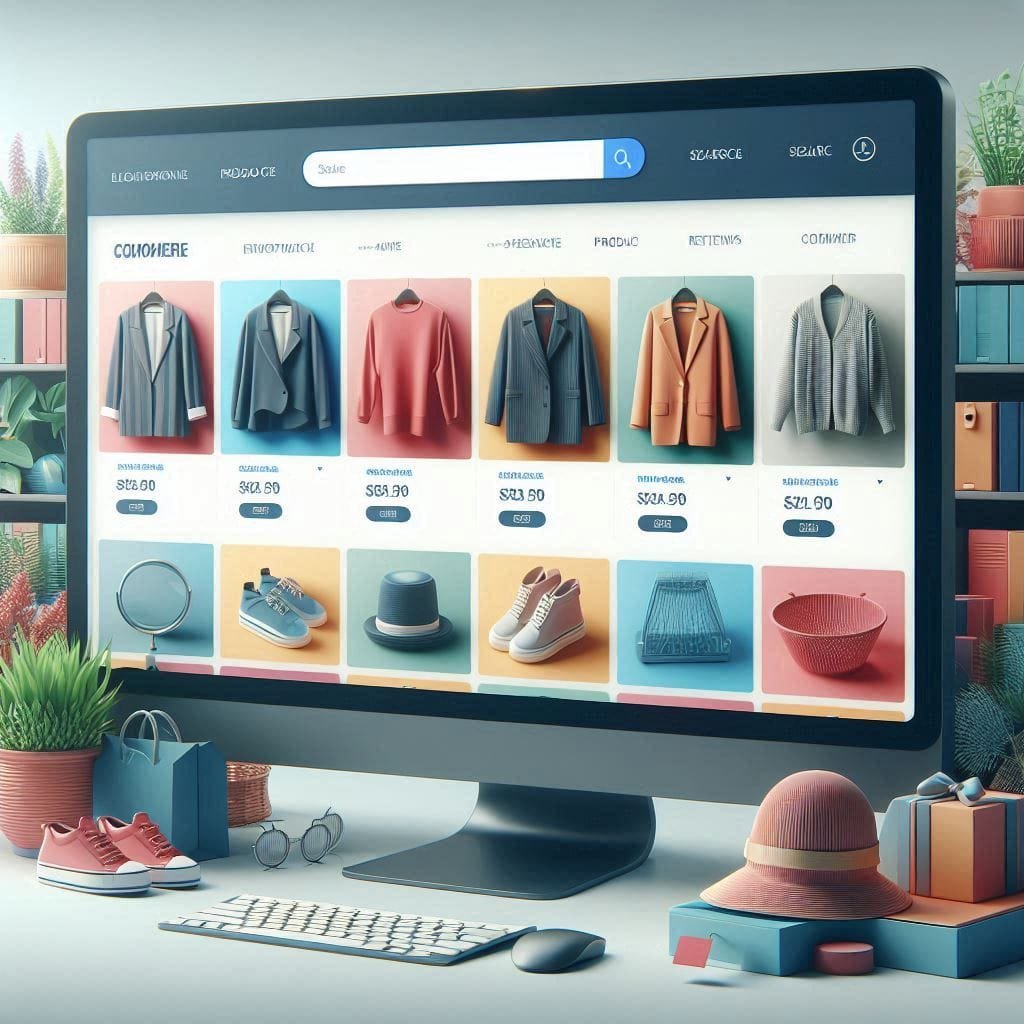
In the vast sea of products that many e-commerce sites offer, helping customers find exactly what they’re looking for quickly is paramount. Advanced search and filter options are no longer optional – they’re expected.
Why it’s essential:
- Reduces frustration and improves user experience.
- Increases the likelihood of conversions by helping customers find relevant products faster.
- Provides valuable data on customer preferences and search patterns.
Implementation tips:
- Implement autocomplete and predictive search functionality.
- Offer category-specific filters (e.g., size, color, price range, brand).
- Include sorting options (e.g., price low to high, best-selling, newest arrivals).
- Implement semantic search to understand user intent beyond exact keyword matches.
- Consider visual search options, allowing users to upload images to find similar products.
3. High-Quality Product Images and Videos: Bringing Products to Life

In the absence of physical interaction, high-quality visual content becomes the primary way for customers to evaluate products. Investing in top-notch product imagery and videos is crucial for building trust and driving sales.
Why it’s essential:
- High-quality visuals can increase conversion rates by up to 40%.
- Videos can reduce return rates by providing a more comprehensive product overview.
- Engaging visual content is more likely to be shared on social media, increasing organic reach.
Implementation tips:
- Use high-resolution images that allow customers to zoom in and see details.
- Implement 360-degree product views for a more interactive experience.
- Create short, informative product videos showcasing key features and benefits.
- Include lifestyle images showing the product in use.
- Ensure all visual content is optimized for fast loading without sacrificing quality.
4. User-Generated Content: Harnessing the Power of Social Proof
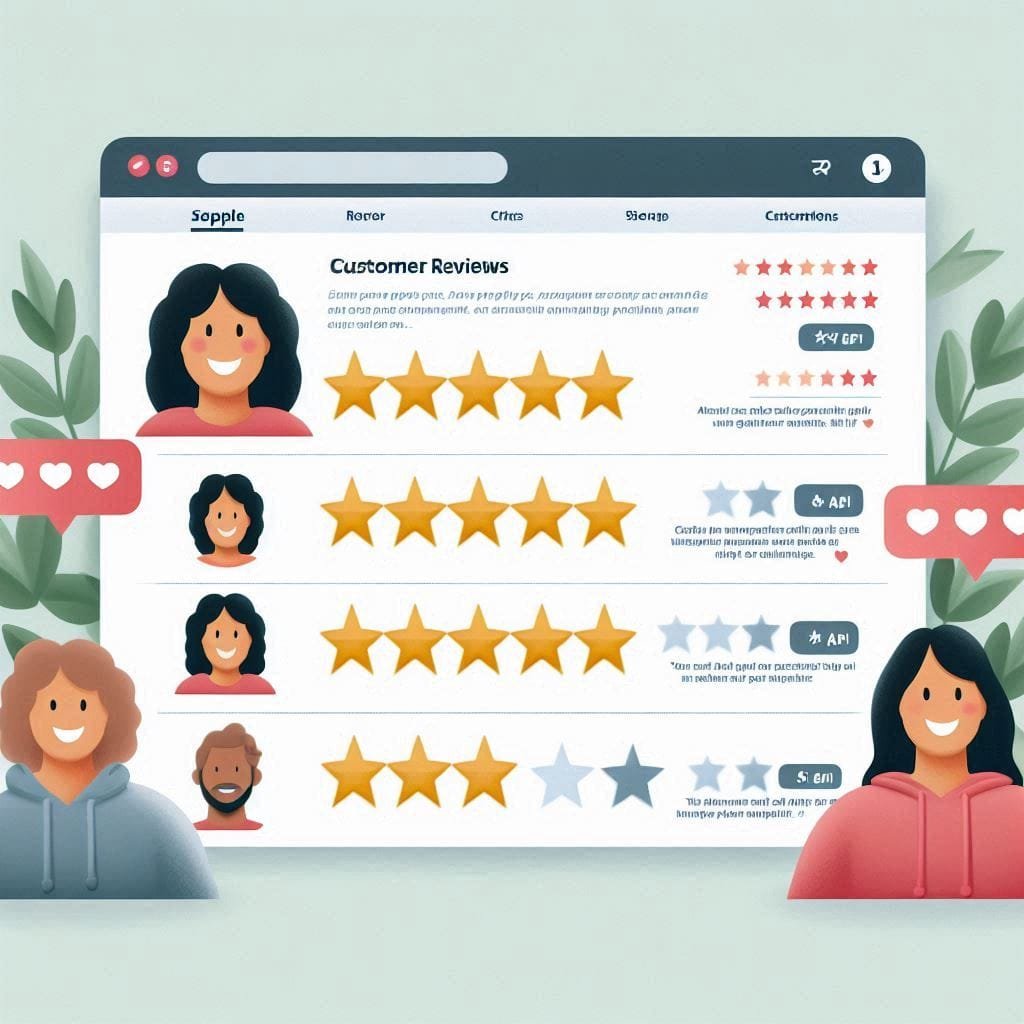
User-generated content (UGC) has become a cornerstone of successful e-commerce strategies. It provides authentic, relatable content that can significantly influence purchasing decisions.
Why it’s essential:
- 92% of consumers trust recommendations from other people over branded content.
- UGC can increase conversion rates by up to 161%.
- It provides fresh, relevant content that can improve SEO rankings.
Implementation tips:
- Implement a robust review and rating system for all products.
- Encourage customers to share photos and videos of their purchases.
- Create a branded hashtag for customers to use on social media.
- Display UGC prominently on product pages and in marketing materials.
- Implement a system to moderate and respond to user-generated content.
5. Personalized Shopping Experiences: Tailoring the Journey for Each Customer

Personalization has moved beyond simple product recommendations. Customers expect a tailored shopping experience that anticipates their needs and preferences.
Why it’s essential:
- Personalized experiences can lead to a 10-15% increase in conversion rates.
- 80% of consumers are more likely to purchase from brands that offer personalized experiences.
- It increases customer loyalty and lifetime value.
Implementation tips:
- Use AI and machine learning algorithms to analyze customer behavior and preferences.
- Implement personalized product recommendations based on browsing and purchase history.
- Create customized email marketing campaigns based on customer segments.
- Offer personalized discounts and promotions.
- Implement dynamic pricing strategies based on customer behavior and market demand.
6. Streamlined Checkout Process: Reducing Friction at the Final Hurdle
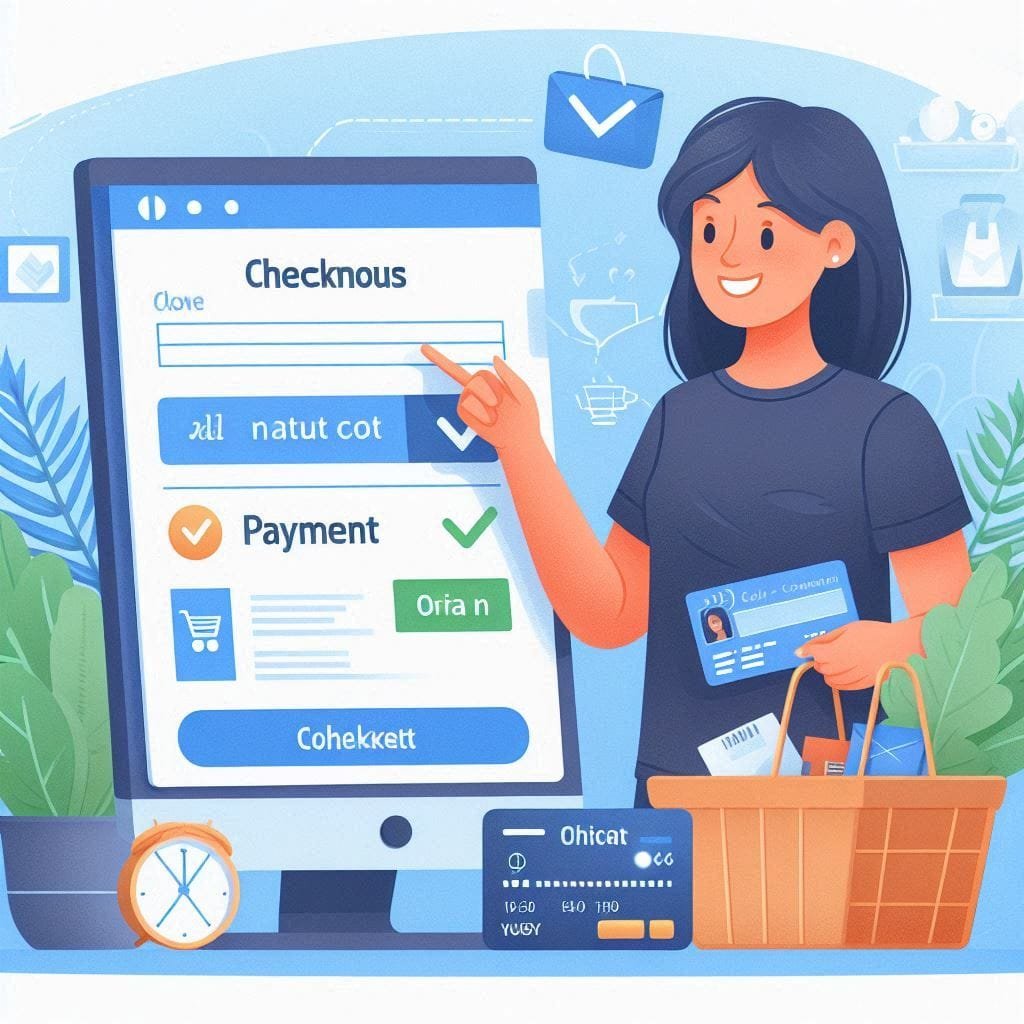
A complicated checkout process is one of the primary reasons for cart abandonment. Streamlining this crucial step can significantly impact your conversion rates.
Why it’s essential:
- The average cart abandonment rate is around 70%, with a complicated checkout process being a major factor.
- A streamlined checkout can increase conversions by up to 35%.
- It improves overall customer satisfaction and increases the likelihood of repeat purchases.
Implementation tips:
- Implement a guest checkout option to remove the barrier of account creation.
- Use a multi-step checkout with a clear progress indicator.
- Implement address auto-complete to speed up the process and reduce errors.
- Offer multiple payment options to cater to different preferences.
- Use inline form validation to catch and highlight errors in real-time.
7. Multiple Payment Options: Catering to Global Consumer Preferences

In an increasingly global marketplace, offering a variety of payment methods is crucial to cater to different regional and personal preferences.
Why it’s essential:
- 56% of consumers expect a variety of payment options at checkout.
- Offering preferred payment methods can increase conversion rates by up to 30%.
- It helps expand your market reach to international customers.
Implementation tips:
- Offer major credit and debit card payments.
- Implement digital wallet options like Apple Pay, Google Pay, and PayPal.
- Consider buy-now-pay-later options like Klarna or Afterpay.
- For global reach, include region-specific payment methods.
- Stay ahead of the curve by considering cryptocurrency payment options.
8. Strong Security Measures: Building Trust in the Digital Age

With cyber threats on the rise, implementing robust security measures is non-negotiable for e-commerce websites.
Why it’s essential:
- 84% of consumers would abandon a purchase if data was sent over an unsecured connection.
- Strong security measures protect both your business and your customers from fraud and data breaches.
- It builds trust and credibility, encouraging customers to make purchases and return in the future.
Implementation tips:
- Implement SSL certificates to encrypt data transmission.
- Use strong, unique passwords and implement two-factor authentication.
- Regularly update and patch all software to address security vulnerabilities.
- Comply with PCI DSS standards for handling credit card information.
- Implement fraud detection systems to identify and prevent suspicious transactions.
9. Omnichannel Integration: Creating a Seamless Cross-Platform Experience

Customers expect a consistent and integrated shopping experience across all channels – from your website to social media, mobile apps, and even in-store experiences.
Why it’s essential:
- Omnichannel customers spend 15-30% more than single-channel customers.
- It increases customer loyalty and retention rates.
- It provides valuable data insights across multiple touchpoints.
Implementation tips:
- Ensure consistent branding and messaging across all channels.
- Implement a centralized customer database to track interactions across platforms.
- Offer features like “buy online, pick up in-store” or “return in-store” for online purchases.
- Use retargeting strategies to re-engage customers across different platforms.
- Implement social commerce features to allow purchases directly from social media platforms.
10. Real-Time Inventory Management: Enhancing Transparency and Efficiency

Accurate, real-time inventory management is crucial for meeting customer expectations and optimizing your supply chain.
Why it’s essential:
- Prevents overselling and the associated customer disappointment.
- Reduces carrying costs by optimizing stock levels.
- Improves customer experience by providing accurate availability information.
Implementation tips:
- Implement an integrated inventory management system that updates in real-time.
- Display stock levels on product pages to create urgency and manage expectations.
- Set up automated reorder points to maintain optimal stock levels.
- Use predictive analytics to forecast demand and adjust inventory accordingly.
- Implement a system for managing backorders and pre-orders efficiently.
11. AI-Powered Chatbots: Providing 24/7 Customer Support

AI chatbots have evolved from simple question-answering tools to sophisticated virtual assistants capable of handling complex customer interactions.
Why it’s essential:
- Provides instant, 24/7 customer support without the need for human intervention.
- Can handle multiple customer inquiries simultaneously, improving response times.
- Collects valuable customer data and insights to improve overall service.
Implementation tips:
- Use natural language processing (NLP) to ensure chatbots understand and respond naturally to customer queries.
- Train your chatbot on your specific product catalog and frequently asked questions.
- Implement chatbots across multiple channels, including your website, app, and social media platforms.
- Set up seamless handoffs to human agents for complex issues.
- Continuously analyze chatbot interactions to improve their effectiveness and identify areas for improvement.
12. Social Proof and FOMO Elements: Leveraging Psychology for Conversions

Incorporating social proof and fear of missing out (FOMO) elements can significantly influence purchasing decisions by tapping into psychological triggers.
Why it’s essential:
- 92% of consumers are more likely to trust non-paid recommendations than any other type of advertising.
- FOMO can create a sense of urgency, encouraging quicker purchase decisions.
- It helps build trust and credibility for your brand and products.
Implementation tips:
- Display real-time notifications of recent purchases or product views.
- Show the number of items left in stock to create urgency.
- Implement countdown timers for limited-time offers or flash sales.
- Display trust badges, certifications, and awards prominently.
- Showcase customer testimonials and success stories throughout the site.
Conclusion
As we navigate through, the e-commerce landscape continues to evolve at a rapid pace. Implementing these essential features is crucial for staying competitive and meeting the ever-changing expectations of digital consumers. However, it’s important to remember that the key to a successful e-commerce website lies not just in implementing these features, but in doing so in a way that aligns with your brand identity and meets the specific needs of your target audience.
For businesses looking to implement these features and create a cutting-edge e-commerce experience, partnering with experienced developers is often the most efficient path to success. HV Infotech offers comprehensive e-commerce website development services to help businesses build robust, feature-rich online stores. Whether you’re looking to leverage specific platforms like Shopify or WooCommerce, or need a custom solution, their expertise can help you create an e-commerce website that not only incorporates these essential features but also stands out in the crowded digital marketplace.
By focusing on these key features and continuously adapting to new trends and technologies, you can create an e-commerce experience that not only meets but exceeds customer expectations, driving growth and success for your online business and beyond.

